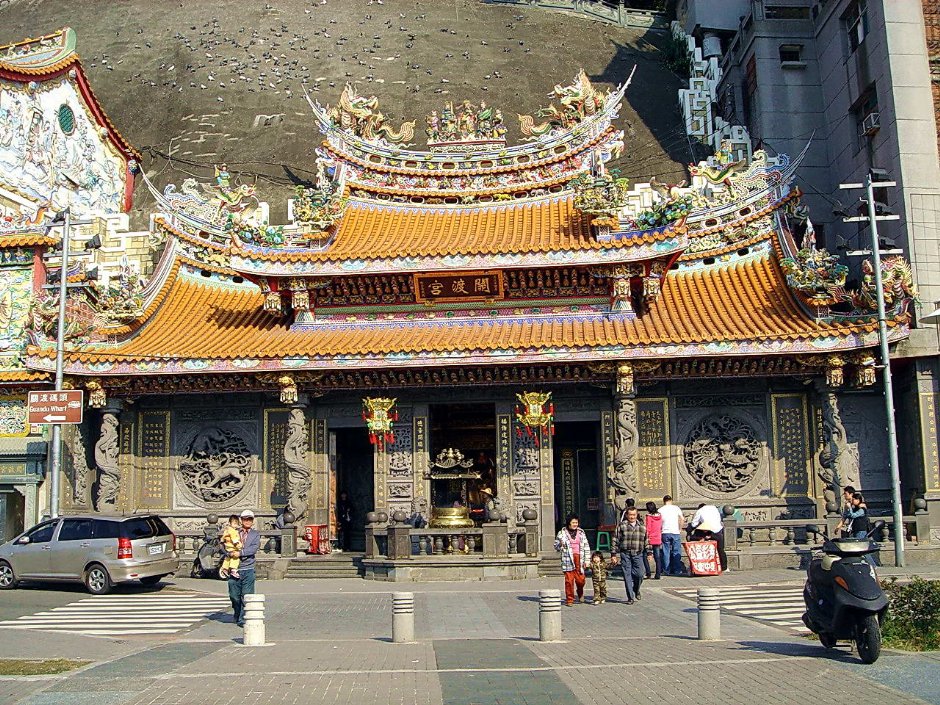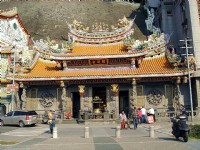The Guandu Temple is rich in history. The carving of the dragons on the pillars, stone lion sculptures, wall engravings and especially the doors, were very rare and skillful haniworks. Inside the chamber, more picturesque carvings and paintings are found on all 4 sides, pillars and ceilings. They are truly magnificent. At the altar, is none other than the statue of Mazhu. Her generals, Chianliyan (Thousand-mile eyes) and Soonfung-er (wind ears) are on both sides. The gentle smiling face of Mazhu is a great contrast to her fierce-looking generals.
On the right-hand side of the temple, there is an 80 meter long cave called Kufour Cave. Inside the cave, there are 28 statues of the heavenly emperors. At the end, there is another statue which is of the Thousand-hand and Thousand-eye Kuanyin. The hands and eyes represent goodness for all humans.
Behind this statue is the exit to the cave where visitors can rest and enjoy magnificent views of the river.













































